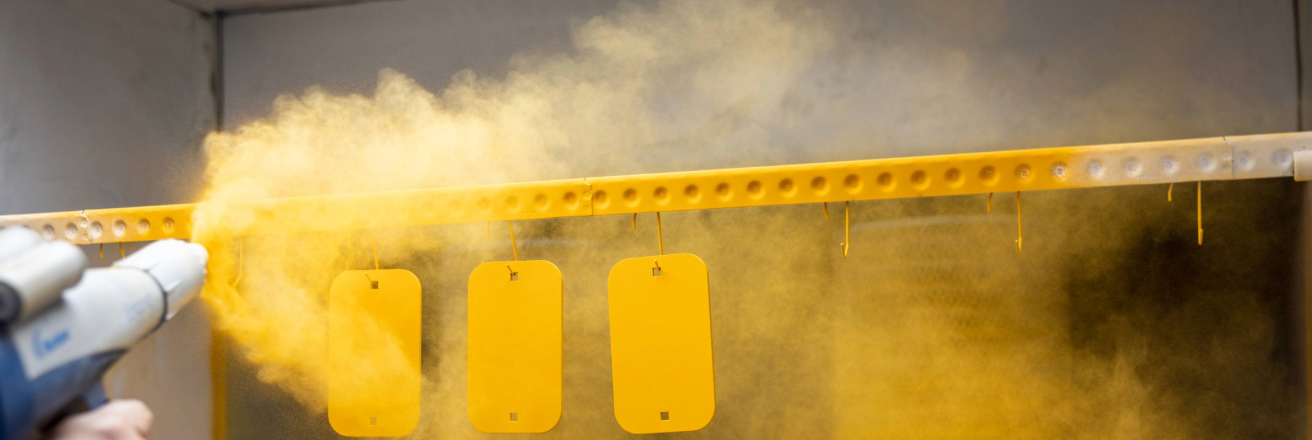Electrostatic Spray Deposition (ESD) for Powder Coating Applications
Electrostatic Spray Deposition (ESD) is the leading method for powder coating application, renowned for its ability to deliver a consistent and uniform finish. This innovative process involves electrically grounding parts to create an electrostatic field, which effectively attracts charged paint particles to the surface, ensuring an even coat across the entire component.
The ESD Process: A Four-Step Approach
- Pretreatment: The first step in the ESD process is pretreatment. To achieve optimal adhesion, parts undergo thorough cleaning through methods such as sandblasting or chemical preparation. This crucial step removes debris and contaminants, setting the stage for optimal powder coating application.
- Painting: Once prepped, the grounded parts are suspended on a conveyor system and transported through a specialized paint booth. Here, a unique spray gun applies an electrical charge to the powder coating, allowing for precise application and ensuring that the powder adheres effectively to the surface.
- Curing: After painting, the parts enter a thermal oven where they are subjected to heat. This process melts the powder particles, forming a continuous film over the surface. The specific curing temperatures and duration initiate essential chemical reactions among the powder molecules, transforming the gelled powder into a durable, hard protective finish.
- Cooling: The final step involves cooling the coated parts. As the powder cools, it solidifies and hardens, enhancing the protective performance and ensuring a smooth, defect-free surface. Proper cooling is vital to achieving the desired finish quality and durability.
Precision powder application with Electrostatic Spray Deposition (ESD) ensures fewer defects and a resilient, long-lasting finish.









